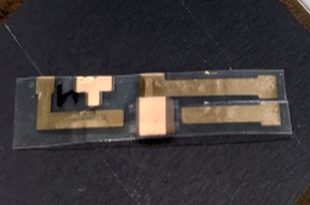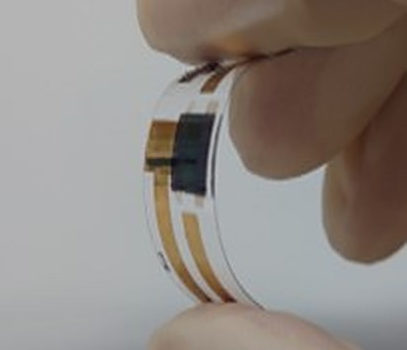Researchers from Ritsumeikan University in Japan have built a heterojunction solar cell based on zinc magnesium oxide (ZnMgO) and selenium (Se).
It works through the so-called piezoelectric effect. Piezoelectric materials are commonly used for engineering applications, mainly as actuators and sensors generating and sensing mechanical deformation in materials.
“The effect of piezoelectric materials polarized by mechanical strain or vibration on photovoltaic or photocatalytic performances is called the piezo-phototronic effect,” the scientists said. “The piezo-phototronic effect has attracted attention for improving the performances of photovoltaic devices and LEDs by rearranging the energy bands at the p-n junction.”
Researcher Taizo Kobayashi said the cells could be produced at lower costs than copper, indium, gallium and selenium (CIGS) or perovskite thin-film solar cells, as the p-type selenium used in the devices is an inexpensive element.
“Potential applications are thin-film flexible piezoelectric-photovoltaic devices that can generate electricity simply from indoor lighting produced by LEDs and compact fluorescent lamps, or self-powered strain sensing devices,” Kobayashi told pv magazine.
The group fabricated the solar cell on a flexible polyethylene terephthalate (PET) film with sputter-deposited ZnMgO thin film and photo-absorbing selenium as the n-type window layer and p-type layer, respectively.

“When compressive strain is applied on the ZnMgO layer, which is piezoelectric, wurtzite and semiconducting, a negatively polarized ZnMgO region is formed near the Se layer,” the scientists said.
The polarization decreases the conduction band offset (CBO) at the interface of ZnMgO and Se layer. The CBO is the energy difference between bands of materials when considering a semiconductor heterostructure.
“ZnO has a non-centrosymmetric wurtzite-type crystallographic structure which can induce piezoelectric polarization charges on its surface under strain,” said the scientists.
Wurtzite zinc oxide (ZnO) is a remarkable multifunctional zinc sulfide mineral with a hexagonal structure, a distinctive property set, and a huge range of existing and emerging applications. The ZnMgO piezoelectric layer is deformed to negatively polarize ZnMgO/Se interface. As a result, the positive piezoelectric polarization charges can be generated at the interface between the ZnMgO and indium-tin-oxide (ITO) layers. This is turn forms a barrier that facilitates carrier collection from both layers via excessive negative polarization.
The scientists applied different strain levels to the ZnMgO/Se interface and the cell performance was measured to assess the impact of this variation. When the applied strain was increased from 0.41% to 0.40% by varying the bending angle, the device's open-circuit voltage increased from 0.59 V to 0.75 V. The scientists claim this paves the way for significant efficiency improvements for ZnMgO/Se heterojunction photovoltaic devices based on piezo-phototronic effects.
They introduced the new cell concept in “Impact of piezo-phototronic effect on ZnMgO/Se heterojunction photovoltaic devices,” which was recently published in Nano Energy.
“Since ZnMgO/Se heterojunction can be fabricated by only common sputtering and evaporation system, it is considered that it is not difficult to fabricate the proposed device commercially,” said Kobayashi.
This content is protected by copyright and may not be reused. If you want to cooperate with us and would like to reuse some of our content, please contact: editors@pv-magazine.com.




By submitting this form you agree to pv magazine using your data for the purposes of publishing your comment.
Your personal data will only be disclosed or otherwise transmitted to third parties for the purposes of spam filtering or if this is necessary for technical maintenance of the website. Any other transfer to third parties will not take place unless this is justified on the basis of applicable data protection regulations or if pv magazine is legally obliged to do so.
You may revoke this consent at any time with effect for the future, in which case your personal data will be deleted immediately. Otherwise, your data will be deleted if pv magazine has processed your request or the purpose of data storage is fulfilled.
Further information on data privacy can be found in our Data Protection Policy.